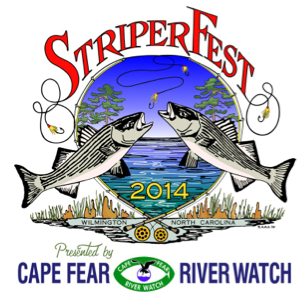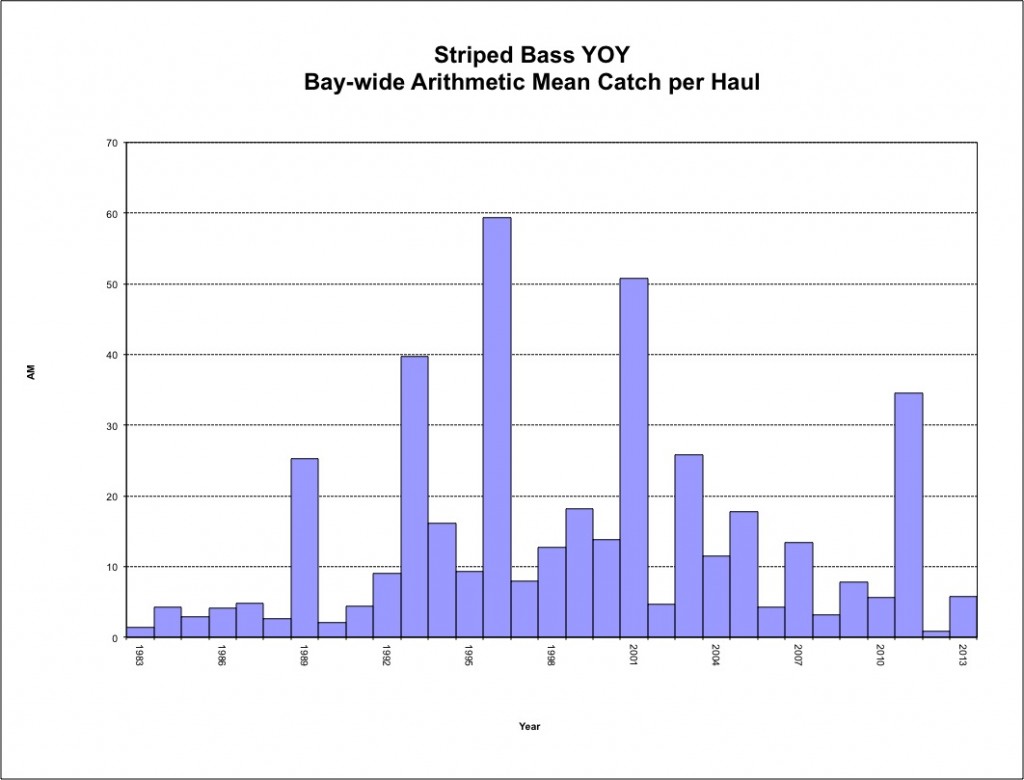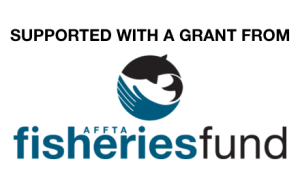Cape Fear River Striperfest 2014
From our RIVERKEEPER® and Executive Director, Kemp Burdette:
On January 17 & 18, 2014, the Sixth Annual Cape Fear River Watch StriperFest will be held to support the restoration of the Cape Fear River fishery. StriperFest is a two day event filled with fun, exciting, and educational activities to raise awareness and celebrate the Cape Fear River fishery.
- Friday January 17th – Join us at the StriperFest Banquet and Auction. A wonderful meal and a dazzling auction filled with artwork, vacation packages, fishing trips & gear, and more!
- Saturday January 18th – Fish in the region’s premier tag & release striped bass tournament with top guides!
- Saturday January 18th – Bring the whole family out to the StriperFest Community Education Day extravaganza. Learn about the river, water quality, fisheries, and more!
- Saturday January 18th – Stick around for the fun and informal awards ceremony to hear the results of the tournament…and some fish tales!
CLICK FOR FULL PDF TO READ MORE
Be part of the action!
Sponsor StriperFest 2014 to support the critical work to restore the Cape Fear River and its fishery.
Stripers Forever Protest Chesapeake 14% Quota Increase
The letter below was sent by Stripers Forever to Officials in MD and VA in protest of the planned 14% quota increase in Chesapeake Bay that is designed to target the 2011 year class – the only really successful one in the last 10 years. More information is available in the previous two posts.
To: ICPRB, Maryland Department of Natural Resources, Virginia Marine
resources Commission
From: Stripers Forever
Subject: The Chesapeake Bay striped bass quota increase
The striped bass population is in serious decline along the Atlantic coast
according to the Atlantic States Marine Fisheries Commission. Even though
it insists that stripers are not yet being overfished, the ASMFC board has
directed its technical committee to develop ways to reduce striper
mortality beginning in 2015.
So we were shocked to learn that Maryland, Virginia and the Potomac River
Watershed Commission have decided to increase harvest quotas in the
Chesapeake Bay area for 2014, thus exploiting the only above-average
striped bass spawning year class in the past decade. The decision is
irresponsible at best and will force increased commercial pressure on an
already badly compromised fishery
Stripers Forever joins the Coastal Conservation Association in requesting
that the harvest increases planned for the Chesapeake Bay area be
rescinded immediately so this threatened fishery can be conservatively
managed to sustain the resource.
Thank you.
Brad Burns
President, Stripers Forever
Chesapeake Bay Striped Bass kill to Increase 14% in 2014
| The Maryland Department of Natural Resources recently announced that the Chesapeake Bay harvest quota would increase by 14% in 2014. The text of the release and information on the splits between jurisdictions and recreational/commercial allocations can be found below. The reason is simply that the 2011 year class had a high young of the year count, and managers feel that the extra biomass is there to catch. The Bay had been harvesting less than the quota allowable under the ASMFC quota because production of young striped bass has been poor.Stripers Forever’s board disagrees with this increase as do most of the fishermen and fishing groups that we have spoken with. While 2011 may have produced a good young of the year count, we did not see the volume of very small stripers along the coast that would indicate an overly large year class. Survival of young Chesapeake Bass is an issue considering the disease and water quality issues the Bay faces. Beyond that we know that the 2012 and 2013 year classes were poor, so there is not much in back of this one year class. Additionally the ASMFC stock assessment just confirmed that striped bass are far less abundant now than just a few years ago. We are already near or in a state of overfishing, and we have fished the stock at above the target rate consistently for years. It seems like reductions are called for and not quota increases.
We can lay this on the doorstep of the commercial fishery. If striped bass were a coast wide game fish the recreational community would have vetoed these increases for certain. Here is the announcement.
|
||||||||||||||||||||||||||||||
|
|
||||||||||||||||||||||||||||||
Striped Bass Stock Status
At its annual meeting on October 29, 2013, the Atlantic States Marine Fisheries Commission (ASMFC) adopted a new stock assessment. In a nutshell, the assessment shows that while the spawning stock biomass is not yet critically low (as of the end of 2012), we have reached the overfished threshold and are well below the target level set in 1993 when the stock was first thought to be recovered from the crash of the 1970’s. The overfished threshold is a point at which the spawning stock biomass would slip below the level it was at when the successful 1993 year class was spawned, and is calculated to provide what is thought to be the minimum acceptable spawning stock – one with some margin of error that could produce the much larger year classes needed to support a robust recreational fishery.
The current level of fishing mortality, while below the threshold in 2012, is now forecast to be greater than the prescribed target, which means that too many fish are being killed by fishermen to maintain the target spawning stock biomass.
Striped bass spawning success varies from year to year. But the recent Young of the Year (YOY) spawning numbers are very disturbing. The 2013 YOY count of striped bass spawned in Maryland’s portion of the Chesapeake Bay was below the average of the last 20 years (see graphic below). A year earlier, in 2012, the YOY count was the worst ever. The Hudson River, which is the second largest producer of baby stripers on the Atlantic Coast, has now had three years of poor spawning success. Striped bass are the major predators in their niche, and nature designed them to grow large and to spawn over a long lifetime. Some biologists are greatly concerned that the management concept of focusing harvest on the larger, more mature fish in the population is destabilizing and could lead to long-term spawning disaster.
Further evidence of the declining fishery is evident in greatly decreased recreational catches and a lower CPUE coast-wide. CPUE stands for catch-per-unit effort which simply means how many fish are caught during the time spent trying to catch them. The catch declines have been reported throughout the migratory range of the striped bass.
Paul Diodati, the Massachusetts Director of Fisheries, offered a plan to cut the recreational catch in the coastal fishery from two fish at 28 inches to one fish, and to make a cut of corresponding magnitude — about 38 percent — in the commercial quotas. Diodati said he had been on the water and seen firsthand what has happened to the fishery. He also said the latest stock assessment shows that the ASMFC should have taken steps to reduce fishing mortality several years ago.
Unfortunately, most other members of the ASMFC were not prepared to make immediate cuts. It is impossible for us to understand why, especially since opponents of Diodati’s measure include representatives of several states where the striped bass is already a game fish. Instead, the ASMFC charged the technical committee to come up with a list of five possible measures beginning in 2015 that are designed to bring the population back in line with the target spawning stock biomass. We think these reductions will be too little too late and that far greater cutbacks will be required down the road.
Stripers Forever feels that harvest reductions are needed now to lower striper mortality and raise the level of the striped bass population coast-wide. Stripers Forever was started 10 years ago because many of us could see the quality of the fishery begin to slip away almost as soon as catch levels were increased to the current levels. The YOY graph reveals that the year classes since 2000 have been on average much smaller than those in the 1990’s. Nothing can change that — the fish are simply not in the pipeline to support the current levels of fishing mortality. No one really understands how much fishing pressure striped bass can take and still reproduce successfully, but it is obvious that the fishing pressure needs to be substantially lower than it is now.
Stripers Forever has bills in the Massachusetts legislature that would remove the part-time or “recremercial” fishermen from the fishery, reduce the commercial quota correspondingly, and eventually sunset the commercial fishery completely in 2025. We will also carefully monitor the ASMFC’s deliberations on striped bass and through our membership try to influence the decision making process to adequately reduce the harvest and help turn around the declining population.









